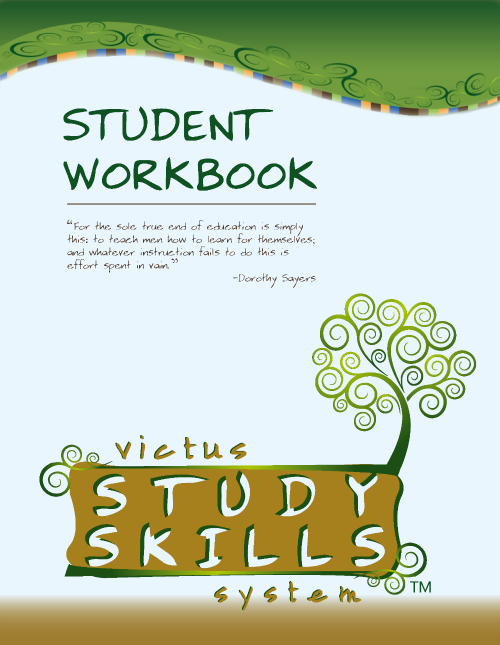
When I received the opportunity to review a study skills system, I jumped at the chance of the opportunity to be able to share with my children these meaningful skills that a priceless teacher once taught me. The system I was asked to review is the Victus Study Skills System Student Workbook and Teacher Edition from Victus Study Skills System.
Homeschooling My Son To Learn Study Skills:
I am a natural planner. Though, I'm not quite sure I was totally born that way.
When I was in high school, I had a very wonderful teacher who walked me through various study skills needed for higher level education. Many college days, I thanked this teacher under my breath as I easily picked up on what each new instructor was wanting from me.
My son is very bright, but he goes about learning at his own pace and in his own way. Most of his learning processes involve watching a video or reading a tutorial, or he will spend time reading online forums. So, I wasn't sure how sitting down with a book that teaches how to gain study skills would go over. To my surprise, he was open to the idea - Even seemed to have somewhat of a curious interest into how it would work.

What Is The Victus Study Skills System All About?
The books are designed to be used with students in grades 5 through 12, but can be adapted for younger or even older students. Obviously, using it with younger students will require more teacher involvement. I used it with my 8th grade, 13-year-old Middle School son.
I received:

Paperback Victus Study Skills System Student Workbook - $20


The system consists of ten lessons, which each take approximately 30 minutes each to complete. When I opened the Teacher Edition book, the first thing I noticed was a suggestion for how to cover each lesson. I decided that their suggested schedule would work best with my son.
Day 1 - Where am I Now? Lessons 1 and 2
Day 2 - Where do I want to be? Lesson 3
Day 3 - How do I get there? Lessons 4, 5, and 6
Day 4 - How do I get there? (Continued) Lesson 7 and 8
Day 5 - How do I get there? (Concluded) Lessons 9 and 10 and end with Evaluation
This is how it looked for us:
The first day, my son took assessment quizzes that showed him where he is now, in terms of study skills, and one that showed him his learning style strengths. It was no surprise to either of us that he is mainly a visual learner.

It was really fun going over the review of the first day's lessons and then proceeding into Lesson #3 which addresses the concept of "Where do I want to be?"



The Meat of the Lessons:
Lessons 4-10 really jump into the meat of the program and concentrate on "How do I get there?". This is the part that I was most interested in seeing how my son would take it all in, since from a parental/teacher view, he generally doesn't really appear to typically have a plan or structured approach to learning.
These lessons cover:
- Time Management
- Scheduling (Weekly, Monthly, and Research Paper Plotting)
- Organization
- Studying (The best study environment, Listening, Taking Notes)
- Test Taking Strategy (Multiple Choice, T/F, Matching, and Essay Test Tips)
- Goal Setting
- Organization and Memorization Secrets
- Practice Exercises
The system breaks down the key steps of studying by using the letters, PQRST (Preview/Question/Read/State/Test) and then moves into note taking shorthand tips.
What did we think?
What I really liked about this section is the PQRST Flash Cards, because I thought it was great for a visual learner to get hands-on practice of remembering what the letters stand for, and I also really liked how the system provided practical organization and memorization tips that work well with my visual learner - Such as color coding, envisioning fact pictures, acrostics and acronyms to break down facts.
Through it all, I think my son learned some vitally important study and planning skills.






That's so funny!... I got "Flash Cards" out of PQRST, but didn't realize PQRST HAD flash cards! We used the information to learn about using flash cards to help us with what my son is studying, but I totally overlooked that the pages were actually flash cards. Now I need to go back and look at that again.
ReplyDelete